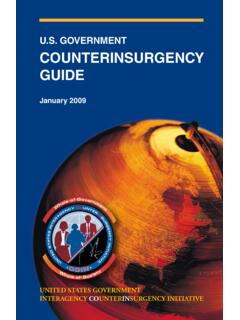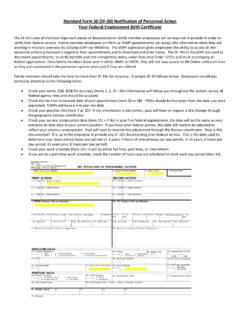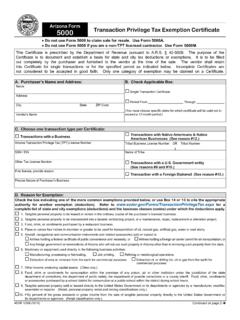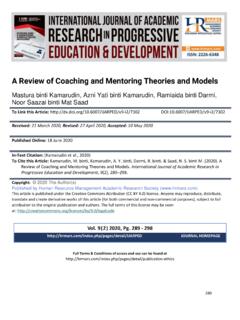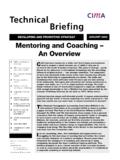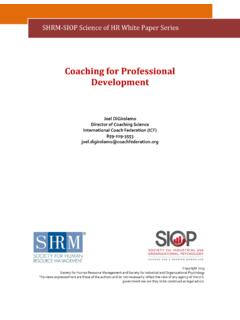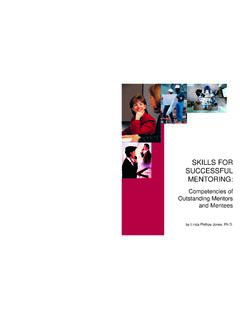Transcription of Planning Individual Development Activities
1 Planning Individual Development Activities To o l s , I d e a s a n d S u g g e s t i o n s United States Department of State Bureau of Human Resources Released October 2006. Printed in Washington A/IIS/MMS 2006-02699(200). Table of Contents Developmental 4. What is a Developmental Activity?..4. Types of Developmental 6. Formal Matrix On-the-Job Position Self-Directed Learning Special Excursion Developmental 9. Types Of Developmental Benefits of a Developmental How to pursue a Developmental Assignment.
2 9. Roadblocks to Developmental Assignments:..9. Tips for persuading your Developing a formal written Strategies and Ideas for Experiential Teaching/Learning Personal Best Defining Learning from Turning an Experience into a Developmental Learning Learning Becoming a Sage: The Keys to Life-long . Table of Contents Getting Started on the Developmental Position Benchmarking Gather Feedback from Organizational Identifying Your Creating an Individual Development Developmental Informational Job Active Learners What to do After Supervisors- What to do After Learning Ten Tips to Make Training and Development Work.
3 62. Building Your Personal Learning Network ..63. Appendix A: . Competency Appendix B: Guide to Training at Cross-Training Record Sheet ..107. Appendix C: 107. Learning Journal ..109. Self-Assessment Worksheet ..112. Job Competency Profile ..117. Feedback Form ..127. Training Evaluation & Feedback ..130. Learning Contract ..131. Appendix D: Development Self-Study 132. Appendix D: CDRC 144.. Developmental Activities Introduction Our most valuable resource is our people. By encouraging developmental Activities for Individual employees, the State Department as a whole will benefit from increased motivation, morale and capacity for service.
4 Approved Activities may be directly or indirectly job or career related. This could include any activity, which would enable staff to become more effective in their current position; would prepare them for advancement within the Department or would enhance personal Development and lifelong learning. The relevance, desirability and timing of participation in developmental Activities are determined through work Planning and goal setting discussions between an employee and his/her supervisor, with the supervisor having the final approval.
5 This toolkit provides guidance, tools and suggestions on how to go about designing developmental Activities in the workplace. What is a Developmental Activity? Not all training and Development takes place in a classroom. A developmental activity or assignment provides employees with an alternative work experience that allows for ongoing experiential learning. This experience enhances an employee's knowledge and skills and can range from on-the-job training to details or rotations outside an organization.
6 Growth and Development are key motivators for employees. Encouraging and fostering ongoing developmental Activities in the workplace will benefit both the employee and the organization. In a nutshell, expanding opportunities for employee growth through job enhancement and enrichment can add depth and breadth to the skills and abilities of your organization. The assignment of additional responsibilities, a commitment to skill Development , delegation of new tasks, an opportunity for more authority and autonomy create an engaged and valued workforce.
7 Employee Development is a collaborative effort between the supervisor and the employee. It balances the employee's needs and interests with the organization's goals and objectives - a win-win situation for both. In the following pages you will find step-by-step guidance and worksheets to get you started on an employee Development plan. You can use as much or as little of the information provided to tailor your developmental action plan to reflect the realities and constraints of your workplace. The important thing is to just get started.
8 Even small changes can have a big impact. Consider the following. Expectations A supervisor's expectations of their employees (Pygmalion effect) and the employee's expectations of themselves (Galatea effect) are key factors in how well people perform at work. According to Susan Heathfield, a management and organization Development consultant, there are fundamental principles you can apply to performance expectations and potential performance improvement at work. To summarize the Pygmalion effect, often known as the power of expectations, consider: Every supervisor has expectations of the people who report to him.
9 Supervisors communicate these expectations consciously or unconsciously. People pick up on, or consciously or unconsciously read, these expectations from their supervisor. People perform in ways that are consistent with the expectations they have picked up on from the supervisor. The Pygmalion effect was described by J. Sterling Livingston in the September/October, 1988 Harvard Business Review. The way managers treat their subordinates is subtly influenced by what they expect of them, Livingston said in his article, Pygmalion in Management.
10 Developmental Activities Heathfield states, The Pygmalion effect enables staff to excel in response to the manager's message that they are capable of success and expected to succeed. The Pygmalion effect can also undermine staff performance when the subtle communication from the manager tells them the opposite. These cues are often subtle. As an example, the supervisor fails to praise a staff person's performance as frequently as he praises others. The supervisor talks less to a particular employee.. Livingston says about the supervisor, If he is unskilled, he leaves scars on the careers of the young men (and women), cuts deeply into their self-esteem and distorts their image of themselves as human beings.




